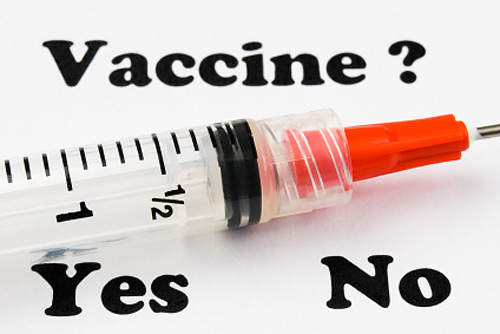Virus H5N1 Modificado es un Complot para vender Tamiflu?
April 6, 2012
Los científicos se contradicen, ya que habían declarado que el súper virus había sido creado en experimentos de laboratorio.
POR LUIS MIRANDA | THE REAL AGENDA | 06 ABRIL 2012
Dos polémicos proyectos de investigación con el virus de la gripe aviar H5N1 no han producido un organismo asesino, pero han generado información útil, dos investigadores dijeron a científicos y bioéticos que se reunieron aquí para hablar de los beneficios y riesgos de la manipulación de patógenos mortales.
“Podemos usar esta información para entender lo que está ocurriendo en la naturaleza”, dijo Yoshihiro Kawaoka de la Universidad de Wisconsin, al grupo que se reúne para debatir experiencias sobre la cepa de la gripe tan temida que ha infectado a 600 personas, matando a más de la mitad de ellos, desde el año 2003. Dijo que su trabajo ya está arrojando luz sobre los brotes en Egipto, el país con el segundo número más grande de casos de H5N1 en ese período.
La reunión en la Royal Society fue realizada después que dos revistas científicas acordaron en diciembre censurar la publicación de dos documentos sobre los experimentos con el vírus de la gripe aviar, ya que se cree que contienen información muy peligrosa para el consumo público. Se les pidió a las revistas no publicar la información después de que el Consejo Nacional de Ciencia para la Biodiversidad llegara a la conclusión que los resultados de los experimentos realizados con fondos federales podrían caer en las manos de terroristas quienes entonces los podrían usar para atacar centros poblacionales.
Ese comité cambió de opinión la semana pasada después de un examen más detenido de los datos antiguos y nuevos proporcionados por Kawaoka y Fouchier, quienes encabezan un equipo de investigadores del Centro Médico Erasmus en Rotterdam. Las revistas, Nature y Science, dicen que van a publicar los trabajos en breve.
Algunos detalles del experimento de Fouchier fueron publicados el mes pasado, disipando algunos temores sobre sus peligros. Kawaoka reveló una versión aún más completa de su trabajo el martes, parar distender preocupaciones. Numerosos lectores, sin embargo, dijeron que es sólo cuestión de tiempo antes de saber si la publicación de los resultados de “investigaciones de doble uso” podría ser utilizada para bien o para mal – la próxima vez.
Normalmente, la gripe aviar es difícil que ser contraída por las personas. Se requiere un contacto estrecho con aves enfermas y casi nunca se pasa de persona a persona. La facilidad de transmisión es principalmente determinada por la estructura de una proteína, la hemaglutinina. Kawaoka quería saber si mutaciones en el gen de esa proteína podrían hacer que el virus se tornara más contagioso en las personas.
El puso un gen de la gripe aviar en el gen de la hemaglutinina de la pandemia de 2009 en el virus de la gripe porcina y por diversos métodos inducidos resulto en cuatro mutaciones. El virus final se transmitió fácilmente entre hurones, a diferencia de los virus que contienen un gen “salvaje” de la gripe aviar en la hemaglutinina. Sin embargo, el virus ingeniado no mata a los animales y ni siquiera los enferma tanto como el virus de la gripe porcina. Las infecciones fueron fácilmente combatidas con el medicamento Tamiflu.
En resumen, no se trataba del virus del juicio final, como los rumores sobre el trabajo de Kawaoka y Fouchier habían sugerido. Fue, sin embargo, útil, Kawaoka sostuvo en la audiencia realizada en la Royal Society ante aproximadamente 250 personas.
Tres de las cuatro mutaciones estaban cerca de una parte de la proteína hemaglutinina que se une a las células de la nariz, la garganta y los pulmones. Muestras de H5N1 de la gripe procedentes de Egipto son más propensas a tener cambios en esa parte de la proteína que las muestras que se encuentran en otras. En los últimos tres años, el 71 por ciento de las muestras de pollos egipcios y todas las muestras de casos humanos, tienen mutaciones en ese sitio.
Esto sugiere que la gripe aviar en Egipto tiene una propensión particular para la infección humana y puede justificar una vigilancia mayor. “Esta información es importante para la evaluación del riesgo”, dijo Kawaoka.
El experimento de Fouchier comenzó con un virus completo H5N1 que venía de Indonesia, el cual ha aparecido más en humanos que en cualquier otro país. A continuación, los genes fueron genéticamente manipulados de una manera que no se le permite describir, porque el gobierno holandés ha puesto un “control de exportaciones” en la información. En una reunión en Washington en marzo, sin embargo, Fouchier reveló que el virus mató a los hurones al ser respirado directamente. Cuando el virus pasó de jaula en jaula en el aire, los animales tosieron y estornudaron, pero ninguno murió.
“Hemos escuchado en la prensa que si este se escapa, va a matar a la mitad la población mundial. Me parece muy dudoso “, dijo el martes. Sin embargo, muchas personas que leyeron el manuscrito Fouchier proporcionado al grupo especial de bioseguridad dijeron que era imposible decir cuán letal virus era.
“No estaba claro. No estaba claro “, dijo Robert G. Webster, un investigador de la gripe del Hospital de Investigación Infantil St. Jude en Memphis, a quien el Comité pidió consejo. Y añadió: “Hubo un gran malentendido por mi parte, y por parte del [comité], sobre la cuestión de un virus letal transmisible en los hurones.”
Fouchier ha aclarado eso.
Traducido del artículo original: Controversial bird flu experiments produced no killer virus, scientists say

